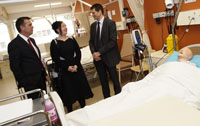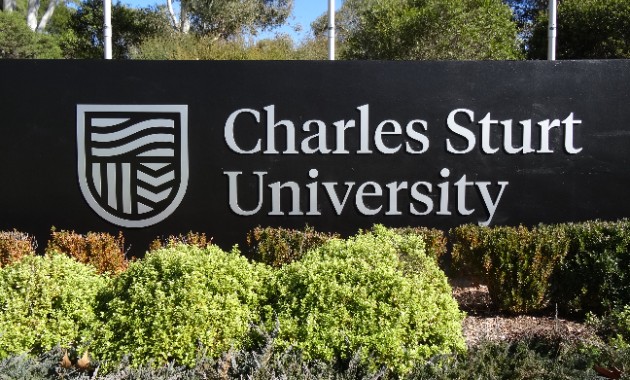Two of regional Australia’s largest tertiary education providers have formed a partnership with the goal of ensuring that communities in the Murray-Darling region have access to a comprehensive range of courses that focus on skills shortages in the region.
 La Trobe Vice-Chancellor Professor John Dewar and Charles Sturt Vice-Chancellor Professor Andrew Vann announced the innovative cross-border partnership today in the twin communities of Albury-Wodonga.
La Trobe Vice-Chancellor Professor John Dewar and Charles Sturt Vice-Chancellor Professor Andrew Vann announced the innovative cross-border partnership today in the twin communities of Albury-Wodonga.Professor Vann said it was imperative that people who live in the Murray-Darling region should be able to access higher education opportunities, without the need to relocate to the city.
‘The initial priority of the partnership will be to collaborate to address rural doctor shortages in the Murray-Darling region,’ he said.
‘We are seeking approval to establish a rural medical school based at both our campuses in Bendigo, Orange and Wagga Wagga. The medical school will provide opportunities for rural students to study medicine without having to leave the regions for a city university.
‘Rural students are consistently under-represented in two thirds of medical schools in Australia, when we know that rural background students are the most likely to work in rural communities.
‘The rural and regional foundations of both La Trobe and Charles Sturt Universities ensure the focus of the medical school would be on supporting regional communities to grow their own,’ he said.
Professor John Dewar said, ‘we want to take the success of James Cook University, which focuses on training doctors for northern Australia and apply that in inland Australia.
‘We are ideal partners. We both have a commitment to the regions.
‘We are the largest regional tertiary education providers in both New South Wales and Victoria. Coming together gives us the critical mass to be able to complement our existing training of nurses, paramedics, dentists, pharmacists and allied health courses with the one missing link in the region – medicine.
‘As part of the partnership plan potential doctors would be recruited from and trained in regional New South Wales and Victoria.’
They said success would be measured through the direct health workforce benefits to the millions of rural and regional Australians who need doctors living and working in their regional Victorian and New South Wales towns.
‘Importantly this would be a solution developed for regional communities by regional communities. This is what I find most exciting. We already work with health services who provide local training to our nursing and allied health students. When the medical school is established we can also work with and support local health services and communities to train doctors within their community,’ said Professor Dewar.
‘If we don’t develop this inland Australian medical school, then we will only see the shortage of rural doctors worsen and our communities health suffer. Given the time it takes to train a doctor we must act now,’ said Professor Vann.





Social
Explore the world of social